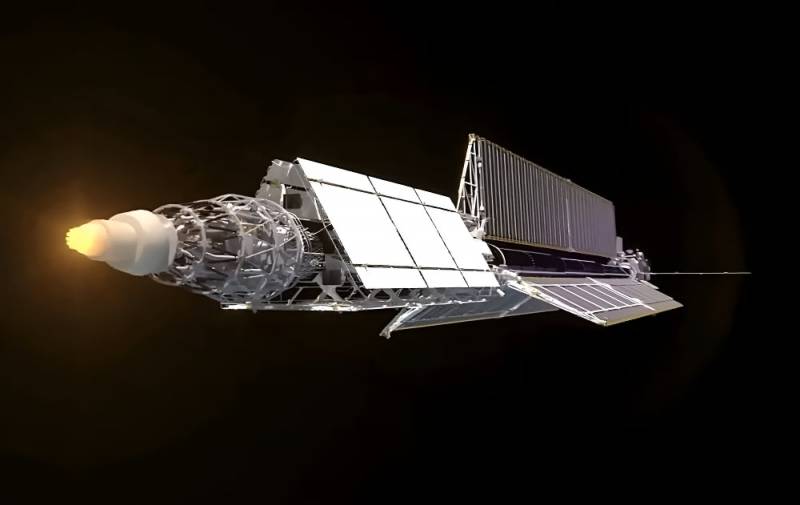Will the nuclear engine tomorrow become the main assistant in the exploration of the Universe?
Humanity is on the verge of creating nuclear upper stages for delivering spacecraft to the far corners of the Universe. Last year, NASA and the Pentagon's Defense Advanced Research Projects Agency (DARPA) announced that they were going to launch a joint module with a nuclear reactor by 2025, or at least 2026.
A cosmic atom with a great future
But first, a little history. On August 25, 2012, the single space probe Voyager 1 crossed the threshold of so-called interstellar space. Then it was located 18 billion km from the Sun, far beyond the boundaries of our system. Thus, today it is the most distant object from Earth created by man. The device was launched in 1977, and almost half a century later it is still functioning properly, sending information to the ground and penetrating into the depths of space. So, this became possible because its systems run on nuclear energy.
The European Space Agency (ESA), for its part, is investing in a program to use nuclear propulsion for space exploration. And NASA has signed a contract with Westinghouse to develop a nuclear reactor concept that will power a proposed lunar base. It is planned to put it into operation before the end of the decade, and according to the authors of the idea, this know-how will successfully cope with operation in the harsh conditions of the lunar surface. And the deeper we explore the solar system and especially the stellar world beyond it, the more attractive the option with a nuclear energy source looks. Indeed, with all its ambiguity, a nuclear engine is almost a perpetual motion machine.
Difficulties and dangers that await a long-distance mission
The American startup Zeno Power recently won a prize of S15 million for its assistance to NASA in the creation of radioisotope nuclear power systems in relation to lunar expeditions. These compact designs have a long and thorny history in space use. In this case, on-board power supply and heat supply will be provided by the fission of nuclear waste.
Total darkness is a specific problem of long-distance space flights. Take the same Moon. The night there lasts 14 Earth days. And in craters, for example, there is always no light. Naturally, generating energy from sunlight is impossible, and the temperature in some places exceeds -200оC.
A space mission is inherently a rather risky undertaking, especially with nuclear components on board. Launch vehicles explode every now and then, scattering toxic debris throughout the near-Earth space and across the Earth.
Kulibin from Alabama
University of Alabama Huntsville professor Dale Thomas invents nuclear booster engines and studies how they work. As the head of the department of industrial and systems engineering and engineering management, he has been doing this for many years, but he has gone further than his colleagues. Instead of powering the rocket through a chemical reaction, Thomas uses a chain reaction:
Nuclear reactions are traditionally used to power spacecraft going on long journeys. So, on Voyager, the power source is 3 radioisotope thermoelectric generators mounted on a rod, using plutonium-238 oxide. Due to the remoteness of the route, solar panels are useless there. So I began to use these reactions as a principle of movement. But there is one significant catch - it is impossible to completely exclude the failure of a nuclear engine, and the consequences of its failure are much worse than those of a chemical one.
This circumstance forces us to reconsider the methods of testing rocket engines. In fact, before the start of serial operation they are tested on the ground, where they sometimes behave unpredictably: they explode, break, burn. And this is normal under experimental conditions. But if a nuclear engine explodes during testing, this is abnormal from the point of view of systemic environmental and radiological safety. Therefore, failures are unacceptable here. This state of affairs slows down development.
If the Pentagon gets down to business, expect surprises
The first nuclear reactor was launched into space back in 1965. Since then, American scientists have been struggling to obtain Technology with a minimum of risk and the invention of a design that would be ready to withstand an explosion. And in the end, a solution was allegedly found here. True, it is still kept in the strictest confidence: it is no coincidence that the Ministry of Defense became involved in this area!
Program Director for Spacecraft Development Rami Mesalam from the University of Leicester (England) shares his thoughts:
Safety is always at the core of nuclear power system design. But good news is that we have almost 60 years of experience in optimizing it. We will also curb nuclear rocket engines... As an option, the ship is launched into low-Earth orbit using conventional solid-fuel stages, after which nuclear units are launched and accelerated for a further mission. A chemical engine can even reach the Moon. But then the nuclear engine will serve as the key to overcoming the interplanetary barrier.
To make a fairy tale come true ...
Due to resource limitations, flights to Mars and beyond are currently difficult. NASA and other aeronautics and space exploration agencies meticulously calculate complex trajectories that take space envoys beyond gravitational fields to minimize fuel consumption. If you have reliable nuclear engines with sufficient performance, such problems will disappear by themselves.
Professor Thomas sums this up:
Nuclear propulsion compared to chemical propulsion is roughly like Ferrari vs. Volkswagen, due to the difference in the power of the power unit. However, I do not agree with the statements of DARPA representatives - we will not make it either by the next year or by 2026. Nuclear-powered vehicles will probably actually take off, but not until 2030. But once this project is implemented, it will radically change the rules of the game, and the plots of science fiction novels and films of the past will become reality overnight.

Information